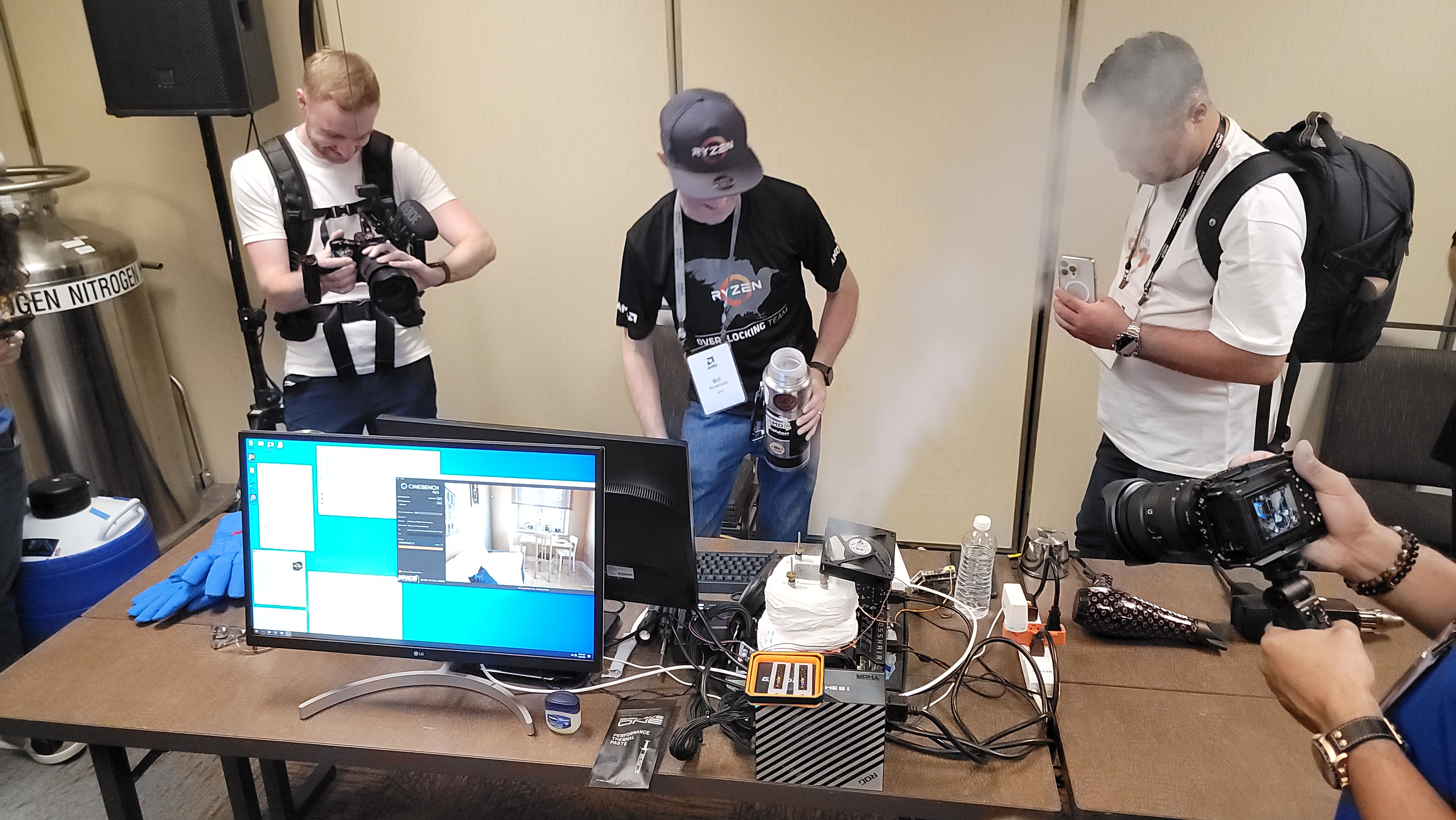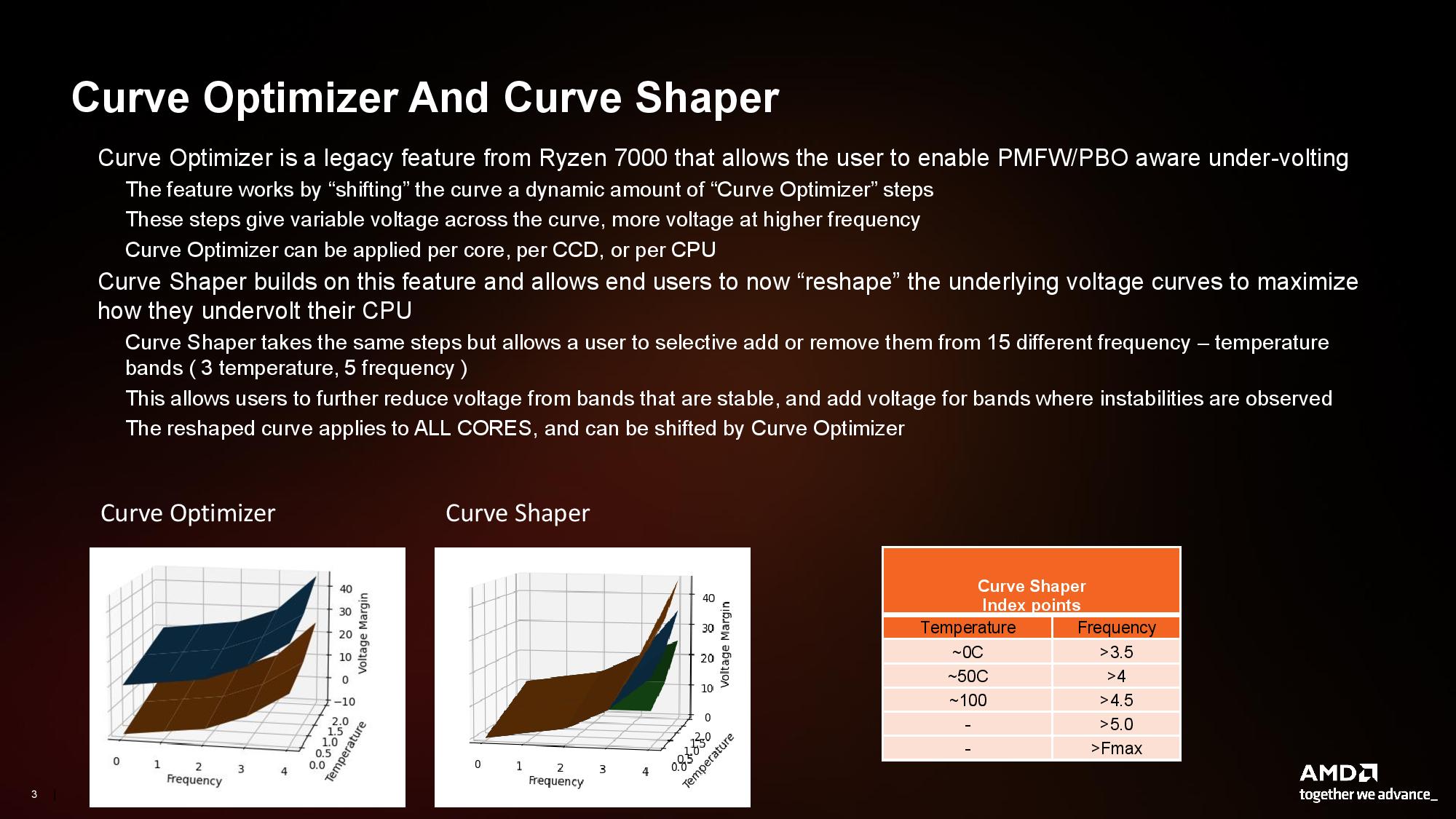
Every new AMD generation seems to bring newly broken world records, and the dawn of Zen 5 is no exception. AMD’s in-house Extreme Overclocking team knocked down the 16-core records for Cinebench R23 and R15 on the Ryzen 9 9950X with the power of liquid nitrogen cooling, as shown during the company's Zen 5 Tech Day. Perhaps most impressive is how the 9950X can beat 7950X’s highest scores with much lower clock speeds, taking home the crown in Cinebench R23 score with 55,046 points at 6.375 GHz and 1.51V as it pulled up to 700W of power during the run as it ran at -105C. Before Zen 5, the 16-core record was 50,843 points on the 7950X at 6.75 GHz.

AMD’s extreme overclocking experts used LN2 (liquid nitrogen) to get CPU temps below -100°C for impossible performance. Granite Ridge, AMD’s internal codename for Ryzen 9th generation, will launch on July 31st and bring the Zen 5 CPU architecture to consumers. AMD’s Zen 5 Tech Day revealed many secrets about the new generation and wrapped up with the Extreme Overclocking demo on Ryzen 9 9950X.
For those unfamiliar with LN2 CPU cooling, the process is fairly involved but simple in theory. A special LN2 pot, which stands a few inches tall, is placed on the CPU. Liquid nitrogen is poured directly into the open-air pot, and a thermocouple rests around one millimeter away from the CPU lid to measure temperatures; careful watch of the temperatures is kept throughout the operation to ensure optimal temperatures are maintained. The LN2 container is surrounded with closed-cell foam and a thick layer of towels to prevent condensation; the XOC example in the video above uses a comical amount of toilet paper for all-day operation.

The Ryzen 9 9950X's XOC numbers are shockingly good. Under load, the highest peak we saw was a maximum sustained clock speed of 6.7 GHz at -105C. For context, the 9950X has advertised base and boost clocks of 4.3 to 5.7 GHz. The team said Ryzen 9000's cold bug resides at -130C.
The highest Cinebench R23 score recorded was 55,046 points at 6.375 GHz and 1.51V. The chip pulled up to 700W of power during the run. Before Zen 5, the 16-core record was 50,843 points on the 7950X at 6.75 GHz.
This roaring success for the Ryzen 9 9950X is not only because of the power of Zen 5, though its 16% IPC improvement over Zen 4 is nothing to scoff at. AMD’s XOC team also took advantage of “Curve Shaper,” a new BIOS utility that is arriving with Granite Ridge. It augments Curve Optimizer, a Ryzen 7000 tool that allows the user to enable undervolting with a goal of more stable overclocks. Curve Optimizer allows for manipulating the voltage/frequency curve, but only by transforming the fixed curve higher or lower. Curve Shaper will allow for much more granular control of the voltage curve across three temperatures and five voltage steps.
Ryzen 9 9950X’s performance boosts over the 7950X are nothing to scoff at. While some overclocking headroom is lost over the 7950X, AMD’s own benchmarks and recent leaked tests in the wild show a 30% increase in performance for the same wattage. For more details from Zen 5 Tech Day about the entire Granite Ridge lineup and Strix Point, see our full coverage of the event.







